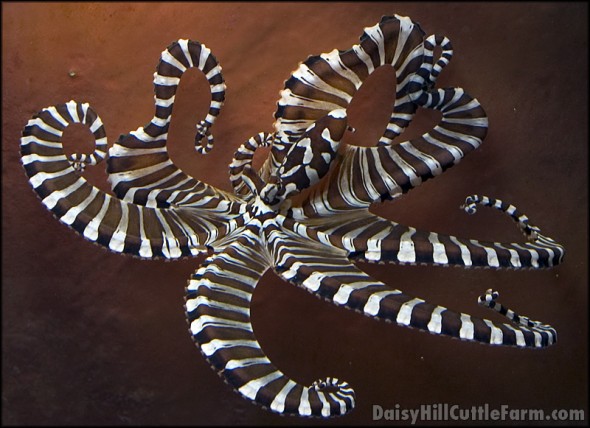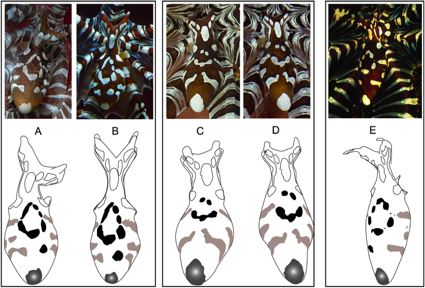Observations on mating behavior and development in the lesser Pacific striped octopus, Octopus chierchiae
http://www.sicb.org/meetings/2011/schedule/abstractdetails.php3?id=627

Meeting Abstract
23.4 Tuesday, Jan. 4 Observations on mating behavior and development in the lesser Pacific striped octopus, Octopus chierchiae (Jatta, 1889) HOFMEISTER, J.K.*; ALUPAY, J.S.; ROSS, R.; CALDWELL, R.L.; Univ. of California, Berkeley; Univ. of California, Berkeley; California Academy of Sciences; Univ. of California, Berkeley jenkkhof@berkeley.edu
The lesser Pacific striped octopus, Octopus chierchiae, is a rare and unique pygmy species that, due to its colorful striping pattern, ability to spawn multiple egg clutches in its lifetime (iteroparity), and direct developing young, is a potentially ideal species to culture for both research and the aquarium trade. O. chierchiae is found from the low intertidal zone to at least 40 m from the Gulf of California to Columbia, but has not been observed since the 1980s due to its scarcity in the wild. O. chierchiae’s iteroparity sets it apart from most other octopods and provides an opportunity to not only study the behavior itself, but to gain insight on the control of reproduction. Four males and two females were mated for a total of eight copulations. Video observations of O. chierchiae mating were taken for the first time. Males exhibited an arm twirling behavior, in which the animal spins the tips of his arms in a circular motion. During copulation, the male pounces on the female, consistent with the behavior of other octopods, but also exhibits a second mating position: beak to beak. One of the females produced three viable clutches of eggs and observations were made on the growth and development of the offspring. Males and females start to diverge in weight at about 150 days, and the resulting sexual size dimorphism coincides with the development of secondary sex characteristics in males. O. chierchiae is a highly desirable species, both in research and in the aquarium trade, and the more that is understood about their mating behaviors and habits, the more likely we will be able to culture O. chierchiae.

